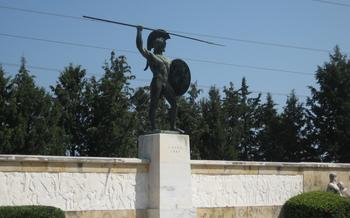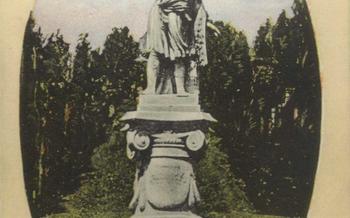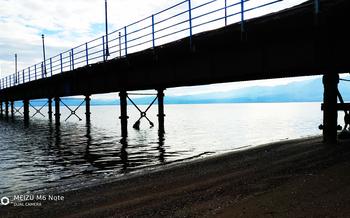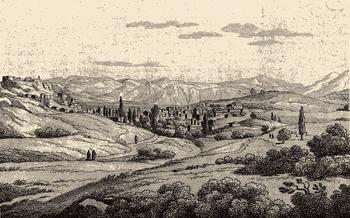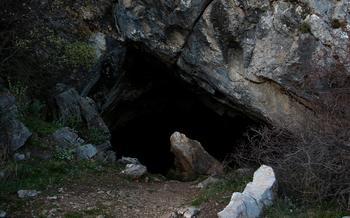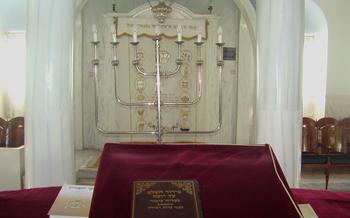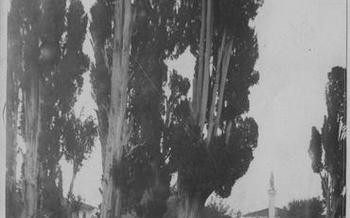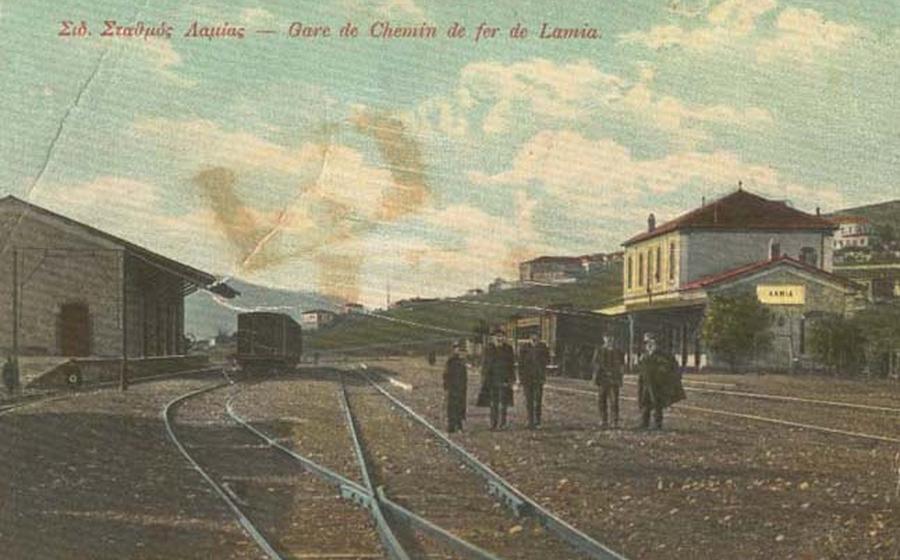
Ancient Theatre of Lamia
- The Ancient Theatre of Lamia
- Historical Background
- Location and Accessibility
- Architectural Details
- Design and Structure
- Acoustical Features
- Decorative Elements
- Performances and Events
- Restoration and Preservation
- Historical Significance
- Mythological Connections
- Archaeological Discoveries
- Educational Opportunities
- Cultural Events and Festivals
- Local Cuisine and Dining
- Accommodation Options
- Shopping and Souvenirs
- Insider Tips
The Ancient Theatre of Lamia
The ancient theatre of Lamia, nestled in the heart of Central Greece, stands as a testament to the rich cultural heritage of this region. Its history dates back to the 4th century BC, when it was constructed as a venue for theatrical performances, religious ceremonies, and political gatherings. Over the centuries, it has undergone various modifications and renovations, reflecting the changing needs and tastes of its inhabitants.
Historical Significance The theatre's strategic location at the crossroads of major trade routes made Lamia a prosperous city, allowing it to invest in cultural endeavors such as theatre. The theatre played a crucial role in fostering a sense of community and civic pride among the citizens of Lamia and served as a platform for the exchange of ideas and entertainment.
Architectural Features The theatre's impressive design showcases intricate details and features that are characteristic of ancient Greek architecture. Its well-preserved seating arrangement, consisting of concentric rows of stone seats, offers spectators an unobstructed view of the stage. The stage itself is adorned with intricate carvings and reliefs, hinting at the grandeur of the performances that once graced this space.
Performances and Events In ancient times, the theatre hosted a variety of performances, including tragedies, comedies, and musical concerts. Today, it continues to be a vibrant cultural venue, hosting modern-day theatre productions, concerts, and festivals, allowing visitors to experience the magic of this ancient space in a contemporary context.
Preservation Efforts The theatre has undergone extensive restoration and preservation efforts in recent years, aiming to protect its historical integrity and ensure its continued use for future generations. Archaeological excavations have uncovered valuable artifacts and inscriptions, shedding light on the theatre's rich history and significance. Ongoing maintenance and conservation work ensure that this ancient marvel remains a symbol of Lamia's cultural heritage.
Historical Background
Founding and Development
In the heart of Greece, nestled between the picturesque mountains and the shimmering waters of the Malian Gulf, lies the captivating city of Lamia. Its story begins in the mists of time, with the establishment of a small settlement in the 6th century BC. Gradually, this settlement grew in size and significance, developing into a prosperous and influential city-state.
Ancient Lamia
During the Classical and Hellenistic periods, Lamia played a pivotal role in the region. Its strategic location at the crossroads of important trade routes made it a hub of commerce and cultural exchange. The city embraced Hellenic culture, constructing temples, theaters, and other impressive public buildings. Lamia also minted its own coinage, a testament to its economic strength and autonomy.
Roman and Byzantine Periods
With the rise of the Roman Empire, Lamia's fortunes shifted. It became part of the Roman province of Achaea, enjoying a period of relative peace and prosperity. During this time, the city underwent significant urban development, with the construction of roads, aqueducts, and other infrastructure. After the division of the Roman Empire, Lamia fell under Byzantine rule, retaining its importance as a regional center.
Modern Lamia
In the 15th century, Lamia was conquered by the Ottoman Turks. During the Ottoman period, the city experienced a gradual decline, but its spirit remained unbroken. In 1833, Lamia was liberated and became part of the newly independent Greek state. Today, it stands as a modern and vibrant city, proudly preserving its rich historical legacy.
Location and Accessibility
Getting to Lamia:
Lamia is conveniently located in central Greece, making it easily accessible from major cities like Athens and Thessaloniki. The city is well-connected by road, with the National Road 1 passing through it. Visitors can take a bus or rent a car to reach Lamia from other parts of Greece.
Exact Location of the Theatre:
The Ancient Theatre of Lamia is situated in the heart of the city, within walking distance from the main square. To find the theatre, visitors can follow signs or ask for directions from locals. The theatre is located on a hilltop, offering panoramic views of the city and the surrounding countryside.
Nearby Attractions:
In addition to the ancient theatre, Lamia offers several other attractions for visitors to explore. The Archaeological Museum of Lamia houses a collection of artifacts from the city's history, including pottery, sculptures, and inscriptions. The Lamia War Museum tells the story of the city's role in World War II. For a taste of local culture, visitors can visit the Lamia Municipal Market, where they can find fresh produce, traditional Greek products, and handicrafts.
Accommodation Options:
Lamia offers a range of accommodation options to suit different budgets and preferences. Visitors can choose from hotels, guesthouses, and Airbnb rentals. For those looking for a unique experience, there are several charming traditional guesthouses located in the old town.
Architectural Details
Design and Structure
The Ancient Theatre of Lamia stands as a testament to the architectural prowess of the ancient Greeks. Its carefully planned design and structure have allowed it to withstand the passage of time and retain its grandeur. The theatre features a skillfully crafted seating arrangement, ensuring optimal viewing angles for spectators. The stage and orchestra, where performances took place, are remarkably preserved, offering a glimpse into the theatre's vibrant past.
Acoustical Features
One of the most remarkable aspects of the Ancient Theatre of Lamia is its exceptional acoustics. Ancient architects ingeniously designed the theatre to maximize sound quality, allowing performers' voices to carry effortlessly throughout the entire space. This remarkable feat of engineering ensured that every member of the audience could fully experience the performances, creating a truly immersive and engaging atmosphere.
Decorative Elements
The theatre is adorned with exquisite decorative elements that showcase the artistic talents of ancient craftsmen. Intricate carvings, sculptures, and mosaics grace the theatre's facade and interior, adding to its overall splendor. These decorative elements provide valuable insights into the artistic and cultural influences that shaped the ancient city of Lamia.
Performances and Events
The Ancient Theatre of Lamia served as a vibrant venue for cultural performances and events in ancient times. During the Hellenistic period, it hosted theatrical productions, including plays by renowned playwrights such as Sophocles and Euripides. These performances were an integral part of Greek society, providing entertainment, education, and a platform for social commentary.
In modern times, the ancient theatre has been revived as a cultural hub, hosting a variety of events and performances. Visitors can experience the magic of live theatre as local and international productions grace the stage. The theatre's unique acoustics and intimate atmosphere create an immersive experience for performers and audiences alike.
Throughout the year, the theatre hosts a diverse range of events, including music concerts, dance performances, and cultural festivals. Renowned artists from around the world have performed on this historic stage, captivating audiences with their talent and artistry.
To plan your visit, check the theatre's official website or local event listings for upcoming performances and events. Whether you're a theatre enthusiast, a music lover, or simply seeking a unique cultural experience, the Ancient Theatre of Lamia offers something for everyone.
Restoration and Preservation
The ancient theatre of Lamia has undergone extensive excavation and restoration efforts to bring it to its current state. Archaeological work began in the late 19th century, revealing the theatre's intricate design and architecture. The restoration process aimed to preserve the theatre's authenticity while ensuring its structural stability. Challenges arose due to the theatre's age and exposure to the elements, requiring careful techniques and materials. Ongoing maintenance is crucial to preserve the theatre's condition, with regular inspections and repairs carried out to address any issues. Future plans include the development of educational programs and interactive exhibits to enhance the visitor experience and promote the theatre's historical significance.
Historical Significance
In ancient Greece, the theatre played a pivotal role in religious ceremonies, political gatherings, and educational purposes. During religious festivals, the theatre hosted sacred performances and rituals honoring various deities. Thespis, considered the father of Greek drama, is said to have originated in this region, and his performances laid the foundation for the development of Greek theatre.
Political assemblies and events were often held in the theatre, allowing citizens to participate in decision-making processes and engage in discussions on important matters. The theatre served as a platform for political debates, speeches, and proclamations, contributing to the democratic spirit of ancient Greek society.
Moreover, the theatre was utilized for educational purposes, presenting performances and lectures that imparted knowledge and wisdom to the audience. Philosophers and scholars used the theatre to disseminate their ideas, while poets and playwrights explored themes of morality, ethics, and human nature through their works, educating and entertaining the public simultaneously.
Mythological Connections
The ancient theatre of Lamia is steeped in mythological significance, adding to its allure and captivating visitors with tales from Greek mythology. One of the most prominent legends associated with the city is the myth of Hercules and the Lamia. According to the myth, Hercules encountered a beautiful but deadly creature known as Lamia, who preyed on young children. In a fierce battle, Hercules emerged victorious, slaying the Lamia and liberating the city from her clutches.
The theatre's connection to mythology extends beyond this legend. It is believed that the theatre was built on the site of an ancient oracle, where people sought guidance and prophecies from the gods. Additionally, the theatre may have been used for religious ceremonies and rituals, honoring various deities and seeking their favor.
The theatre's symbolic meaning is also rooted in Greek mythology. The circular shape of the theatre represents the cosmos, mirroring the belief that the universe was a circular entity. The stage, where performances took place, symbolized the realm of the gods, while the audience represented the mortal world. This symbolic connection between the theatre and the divine further enhanced its significance in ancient Greek society.
Archaeological Discoveries
During archaeological excavations at the Ancient Theatre of Lamia, a treasure trove of artifacts and findings have been unearthed, providing valuable insights into the theatre's rich history. Among the most significant discoveries are ancient inscriptions and texts inscribed on stone tablets or fragments of pottery. These inscriptions offer glimpses into the theatre's construction, performances, and the daily lives of the people who frequented it.
Mosaics and artwork have also been uncovered, adding to the theatre's aesthetic charm and historical significance. These intricate mosaics depict scenes from mythology, daily life, and theatrical performances, offering a visual representation of the cultural and artistic expressions of the time.
The discovery of artifacts, inscriptions, and artwork at the Ancient Theatre of Lamia is of immense importance in understanding the theatre's past and its role in the cultural and social fabric of ancient Greece. These findings help piece together the history of the theatre, providing valuable information about its construction, performances, and the lives of those who experienced it firsthand.
Educational Opportunities
Enrich your visit to the Ancient Theatre of Lamia by delving into its history and significance through guided tours, workshops, and interactive exhibits. Knowledgeable guides will lead you on a journey through time, narrating the theatre's past and showcasing its architectural marvels. Participate in educational workshops or lectures to gain deeper insights into the theatre's role in ancient Greek society and its enduring cultural legacy. Enhance your learning experience with interactive exhibits that bring the theatre's history to life. Explore the theatre's ancient inscriptions, artwork, and artifacts, gaining a deeper understanding of its significance and the lives of those who graced its stage.
Cultural Events and Festivals
The Ancient Theatre of Lamia is not just a historical site but also a vibrant cultural venue that hosts a variety of events throughout the year. Modern-day theatre performances, music concerts, and dance shows bring the ancient theatre to life, allowing visitors to experience the magic of live performances in an extraordinary setting.
Theatre enthusiasts can enjoy modern adaptations of classic Greek plays or contemporary productions by local and international theatre companies. The theatre's acoustics and intimate atmosphere create an immersive experience that transports audiences back in time.
Music lovers can delight in concerts by renowned Greek and international musicians, ranging from traditional Greek music to jazz, rock, and classical performances. The theatre's natural amphitheater design provides excellent acoustics, ensuring that every note resonates throughout the space.
Dance performances add another dimension to the cultural offerings of the theatre. From traditional Greek dances to contemporary ballet and modern dance, there's something for every taste. The theatre's stage provides a perfect platform for dancers to showcase their talent and artistry.
Cultural festivals are another highlight of the theatre's calendar. These festivals often incorporate the theatre as a central venue, hosting performances, exhibitions, and workshops that celebrate Greek culture and heritage. Visitors can immerse themselves in the vibrant atmosphere of these festivals, experiencing traditional music, dance, and local delicacies.
Whether it's a theatrical performance, a music concert, or a cultural festival, the Ancient Theatre of Lamia offers a unique and unforgettable experience that combines history, culture, and entertainment.
Local Cuisine and Dining
A trip to Lamia is not complete without savoring the local culinary delights. After exploring the ancient theatre, take a break to indulge in traditional Greek cuisine. Numerous restaurants and tavernas around the city offer a wide range of dishes that showcase the region's rich flavors.
For an authentic experience, try "to kokoretsi," a traditional Greek dish made from lamb intestines wrapped around seasoned offal and grilled to perfection. "Pastitsio," a baked pasta dish with layers of minced meat, pasta, and béchamel sauce, is another must-try. Don't forget to sample the local cheese, such as "feta" and "graviera," which are often served with fresh bread and olives.
If you prefer a quick and casual meal, explore the street food options. Vendors selling souvlaki, gyros, and other grilled meats can be found throughout the city. These delicious snacks are perfect for a quick bite while on the go.
For a memorable dining experience, choose a restaurant or cafe with a scenic view of the ancient theatre or the surrounding landscape. Enjoy a leisurely meal while taking in the stunning views, creating a truly memorable moment during your visit to Lamia.
Accommodation Options
For a comfortable and convenient stay during your visit to the Ancient Theatre of Lamia, a variety of accommodation options await you. Whether you prefer modern amenities, budget-friendly choices, or unique experiences, Lamia offers something for every traveler.
Hotels and guesthouses near the theatre provide a range of options, from cozy family-run establishments to modern hotels with contemporary facilities. For a more affordable stay, consider guesthouses or Airbnb rentals, which offer a local touch and value for money.
For those seeking a truly unique experience, immerse yourself in the city's history by staying in a renovated historical building or a charming traditional house. These accommodations often feature unique architectural features and provide a glimpse into Lamia's rich past.
Whichever option you choose, make sure to book your accommodation in advance, especially during peak tourist season or if you plan to attend a specific event at the theatre. The proximity to the ancient theatre is a key consideration, allowing you to easily walk to and from the site without the hassle of transportation.
Shopping and Souvenirs
Local Markets: Immerse yourself in the vibrant atmosphere of Lamia's local markets, where you can find an array of souvenirs and handicrafts. These markets offer a treasure trove of unique items, from handmade pottery and woven textiles to intricately carved wooden sculptures. Engage with the friendly vendors and haggle for the best prices, making your shopping experience a memorable adventure.
Handmade Items: For a truly authentic souvenir, seek out shops that specialize in handmade items and traditional crafts from the region. Discover beautifully crafted jewelry, intricate embroidery, and hand-painted ceramics that showcase the artistry and skill of local artisans. These one-of-a-kind pieces make for meaningful mementos of your time in Lamia and support the local economy.
Unique Souvenirs: If you're looking for something truly special, keep an eye out for unique souvenirs related to the ancient theatre or Lamia. Consider purchasing a replica of an ancient Greek coin minted in the city, a miniature model of the theatre, or a book on the history and mythology of Lamia. These souvenirs will serve as lasting reminders of your visit to this captivating city.
Shopping Districts: For a more comprehensive shopping experience, explore the bustling shopping districts or streets of Lamia. Discover a wide range of boutiques, department stores, and specialty shops offering everything from clothing and accessories to electronics and home goods. Indulge in retail therapy and find the perfect souvenirs for yourself, your loved ones, or as gifts for special occasions.
Insider Tips
-
Best time to visit: Aim to visit the ancient theatre during the shoulder seasons (spring or autumn) to avoid the scorching summer heat or crowds. If possible, plan your visit around sunset to witness the magical play of light and shadow on the theatre's ruins.
-
Photography tips: Capture the theatre's grandeur by taking panoramic shots from the upper seating rows. Experiment with different angles and perspectives to showcase the theatre's unique features. Don't miss the opportunity to capture the theatre illuminated at night—a truly breathtaking sight.
-
Hidden gems: Just a short walk from the theatre, discover the picturesque Varnavas Square, lined with charming cafes and shops. Here, you can soak in the local atmosphere and enjoy a refreshing drink with a view of the theatre's ruins.
-
Local customs: As a sign of respect for the historical significance of the theatre, refrain from climbing or sitting on the ancient seats. Remember to be mindful of noise levels during performances or events to ensure a peaceful and enjoyable experience for all visitors.


